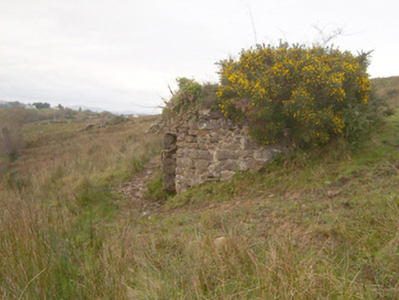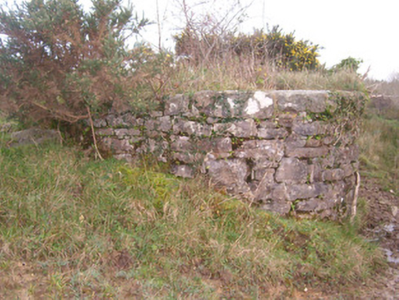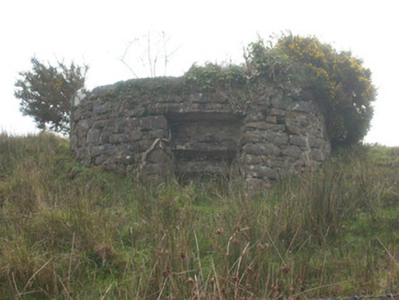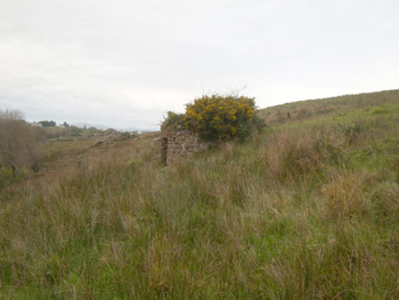Survey Data
Reg No
40909824
Rating
Regional
Categories of Special Interest
Social, Technical
Original Use
Kiln
In Use As
Kiln
Date
1840 - 1880
Coordinates
179527, 376871
Date Recorded
23/11/2007
Date Updated
--/--/--
Description
Freestanding single-bay lime kiln on circular-plan, erected c. 1860. Now out of use. Constructed of roughly coursed rubble stone masonry. Square-headed opening to front (west), the former oven aperture, having stone lintel over. Built into side of gently-sloping hill with roof/top level with land to the east formerly providing access to the loading bay to the summit. Set back from road in rural location to the east of Dunkineely.
Appraisal
This interesting former lime kiln, probably erected during the second half of the nineteenth-century, survives in good condition and retains its early character. It is well-built using local rubble stone masonry and is an appealing and unassuming element of the agricultural/industrial and social heritage of County Donegal. Its circular-plan is unusual, lime kilns being more commonly built on a square-plan, although there are a number of lime kilns in this part of Donegal built to a similar plan. It is built into the side of a hill to allow for the easy loading of stone through an opening in the roof structure, while the aperture to the front was used to fire the oven to burn the stone and produce lime. Lime kilns appear to have come into popular use in Ireland during the eighteenth century and were a very common feature in the rural landscape up until the first decades of the twentieth century. They were used to burn limestone to produce lime, which was used as an agricultural fertilizer and spread on agricultural land, or in construction as a mortar and a render. Lime was also used for lime-washing buildings, particularly farm buildings, as it was regarded as a cleansing agent at the time. This small-scale kiln was probably in use by a local farmer and probably provided lime to small farmers etc. in the immediate environs. It may have some association with a house known as Kilmacreddan, now demolished, that stood to the south. Lime kilns like this started to go out of common usage during the late nineteenth-century with the advent of industrial-scale lime production facilities and improvements in the transport network, particularly the development of the railways. This simple feature is an interesting feature in the picturesque coastal landscape to the east of Dunkineely, and is an integral element of the built heritage of the local area.







